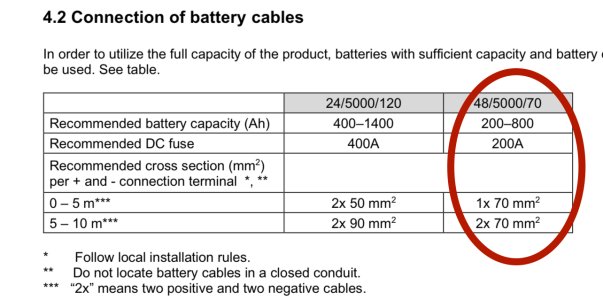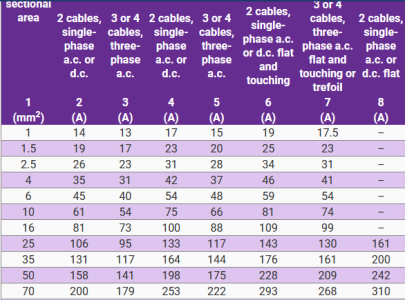sailorbenji
Active member
A hypothetical question (for now) that's caused quite some differing opinions here :
Let's say, according to manufacturer's guidance, I need DC wiring of 100mm2 each for the relevant run and current requirements.
If I ran 2 lengths of 70mm2 cable, side-by-side, but only 80% of the distance, could the run be considered to have been done in 112mm2 cable ((2*70)*0.8)...and thus be considered to be in excess of the 100mm2 requirement?
If not, what is the impact of doubling up a cable run cable like this, but not completely from one point to the other?
Let's say, according to manufacturer's guidance, I need DC wiring of 100mm2 each for the relevant run and current requirements.
If I ran 2 lengths of 70mm2 cable, side-by-side, but only 80% of the distance, could the run be considered to have been done in 112mm2 cable ((2*70)*0.8)...and thus be considered to be in excess of the 100mm2 requirement?
If not, what is the impact of doubling up a cable run cable like this, but not completely from one point to the other?


